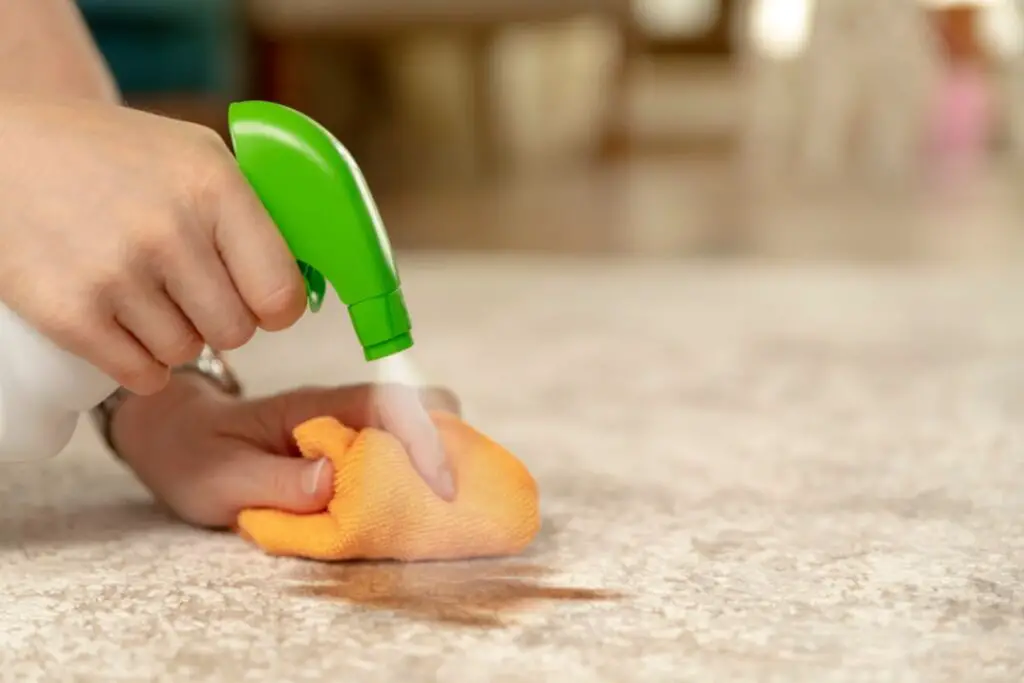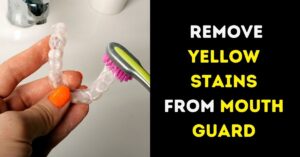Elegant marble surfaces are revered for their timeless beauty, gracing homes and establishments with sophistication. However, even this exquisite stone is susceptible to damage, with silicone stains posing as one of the most stubborn challenges for marble owners. In this post, we provide a step-by-step guide that allows you to restore your beloved marble surfaces to their former glory, preserving their pristine allure.
5 Step-by-Step Guide to Remove Silicone Stains

1. Preparing for the Cleaning Process
Before diving into the silicone stain removal process, it’s essential to get everything in order to ensure an effective and safe cleaning experience.
Gathering Supplies: Make sure you have all the necessary items ready for the task at hand. Here are the list of supplies you’ll need:
- Soft, clean cloth or sponge
- Mild dish soap or stone-safe cleaner
- Plastic scraper or putty knife
- Baking soda
- Water (or an appropriate solvent if dealing with an oil-based stain)
- Hydrogen peroxide (for stubborn stains)
Precautions: Safety should always be a priority during any cleaning process. To protect yourself and your marble surface, consider the following precautions:
- Wear gloves to avoid direct contact with cleaning agents.
- Work in a properly ventilated space to reduce your exposure to fumes.
- Avoid using abrasive or acidic cleaners that could harm the marble.
2. Testing on a Small Area
Before applying any cleaning solution to the entire affected area, it’s prudent to conduct a small test on a discreet spot. This test will ensure the cleaning solution is compatible with your marble surface and won’t cause any damage or discoloration.
3. Softening the Silicone
To facilitate the removal process, you’ll want to soften the silicone first. This can be done by creating a poultice using baking soda and water (or an appropriate solvent for oil-based stains). Here’s how to make and use the poultice:
- Mix a small amount of water with baking soda to create a thick paste-like consistency.
- Spread the poultice over the silicone stain and let it sit overnight.
- The next day, gently remove the poultice, and you should notice a significant improvement in the stain.
4. Gentle Scraping
For any remaining silicone residue, employ a plastic scraper or putty knife to gently scrape it off the surface. Be cautious not to apply too much pressure or use metal tools, as they can scratch or damage the marble.
5. Cleaning the Residue and Restoring the Marble
Once the majority of the silicone has been removed, clean the area with a mild dish soap or a stone-safe cleaner. Wipe away any remaining residue with a soft, clean cloth or sponge. Afterward, polish the marble surface to restore its natural shine and beauty.
Remember, patience and gentle care are crucial when dealing with silicone stains on marble. With the right approach and diligent effort, you can successfully banish those stubborn blemishes and revel in the elegance of your marble surfaces once again.
Alternative Methods for Stubborn Stains
For particularly stubborn silicone stains on marble, there are alternative methods that can prove highly effective:
- Hydrogen Peroxide for Protein-Based Stains: Apply hydrogen peroxide directly to the stain, let it sit for a few minutes, then gently clean and rinse the area.
- Poultice for Deep-Set Stains: Create a thick paste using baking soda and an appropriate solvent (water or mineral oil for oil-based stains). Apply it to the stain, let it dry overnight, then carefully remove it to reveal a stain-free marble surface.
By exploring these alternatives, you can tackle even the toughest silicone stains while preserving your marble’s beauty and integrity.
Preventing Silicone Stains on Marble
As the saying goes, “prevention is better than cure,” and this couldn’t be truer when it comes to keeping your marble surfaces free from silicone stains. By taking proactive measures and adopting a regular maintenance routine, you can safeguard the timeless beauty of your marble. Here are some essential tips to prevent silicone stains on your prized marble surfaces:
- Use Silicone-Free Products: When working with adhesives, sealants, or any products containing silicone, ensure they are silicone-free or have low-silicone content. Opt for alternatives that won’t leave stubborn stains on your marble.
- Be Cautious with Caulk: If you need to use caulk around marble surfaces, select a caulk specifically designed for stone or marble to minimize the risk of silicone stains.
- Clean Spills Promptly: Accidents happen, and spills are inevitable. However, to prevent silicone stains, clean up any spills containing silicone-based products immediately. Prompt effort can make a big difference.
- Use Coasters and Trivets: Protect your marble countertops and surfaces by using coasters for beverages and trivets for hot pots and pans. This simple habit can prevent direct contact with silicone-containing items.
FAQs
Can silicone stain marble?
Yes, silicone can stain certain granites and marbles, especially when used as caulk joints at sinks and splashes. To prevent staining, avoid using silicone-based products in these areas and opt for latex caulking instead.
Does silicone stick to marble?
Yes, silicone sealants can bond effectively with marble and other surfaces. It is essential to be cautious when using silicone on marble, as improper application can lead to bonding issues and the potential for moisture problems or voids behind the stone. To ensure proper adhesion without compromising the marble’s integrity, consider using silicone sealants with the appropriate formula and application technique.
Does silicone leave stains?
Yes, silicone can leave stubborn stains, particularly if it comes into contact with fabrics like sheets. While silicone is resilient, you can effectively clean silicone stains from sheets using common household products.






